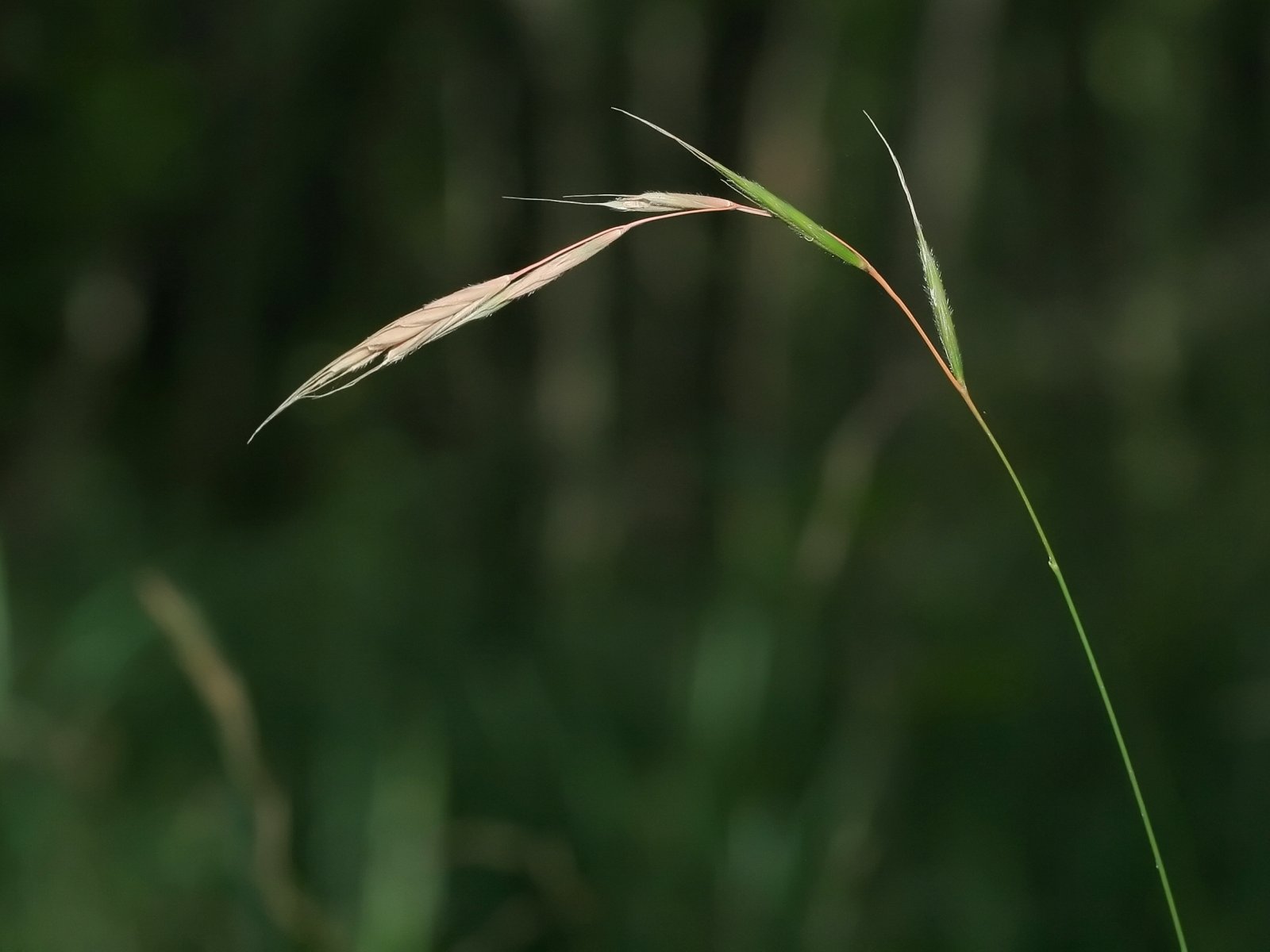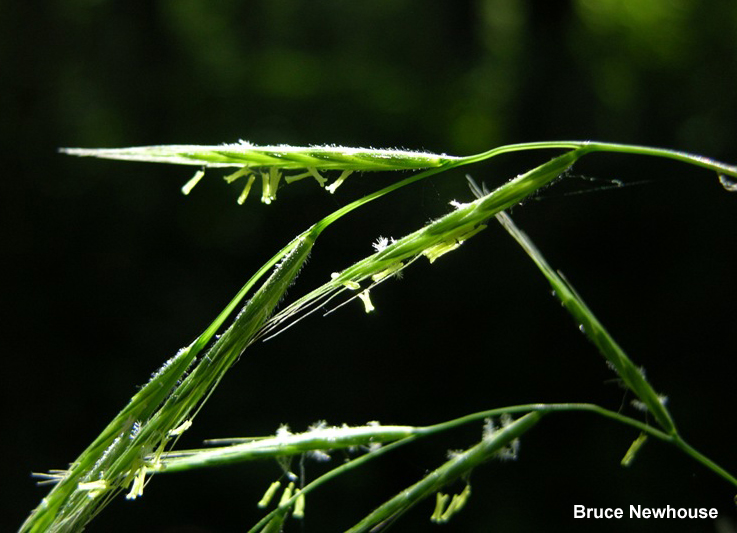Brachypodium sylvaticum
Left: forest Zwenke ( Brachypodium sylvaticum )
The forest Zwenke ( Brachypodium sylvaticum ) is a native grass species in Central Europe from the Gramineae family.
Features
The forest Zwenke forms perennial, dense clumps. It forms no or very short underground runners. The renewal shoots grow mainly within the lowest leaf sheaths up (intravaginal ). The stalks are 40 to 120 inches high. You are bald, only at the nodes they are hairy.
The leaf sheaths are also bald, the lowest, however, are occupied with spreading hairs. The ligule is formed as 1-4 millimeters high, membranous hem. The leaf blades of renewal shoots are dark green, about 10 inches long and 4 to 6 (up to 8.5 ) mm wide. They are soft, matte on the bottom. The leaf margin is ciliate, hairy underside of the scattered.
The grape is 8 to 15 inches long and consists of five to nine (up to twelve) spikelets. She is upright, later overhanging. The Ährchenstiele are 0.6 to 1.4 millimeters long, and densely hairy and short. The spikelets are alternate on the main axis and consist of six to eleven (up to fifteen) single flowers. Without awn the spikelet is 20 to 30 ( to 40 ) mm long. The florets fall when ripe individually from the glumes, which are to remain. The membranous glumes are almost the same, mostly short haired. the lower one is five -to seven- annoying, 6 to 10 millimeters long and lanceolate, acute. The upper is seven -to nine- annoying 8 to 12 (up to 15 ) mm long. It is broadly lanceolate and pointed or runs into a long awn up to 3.5 mm from.
The lemmas are seven annoying, 9-12 mm long, oblong- lanceolate and run in an 8 to 15 millimeters long awn from. It is derbhäutig and hairy at the edges. The awn of the upper lemma of each spikelet is at least as long as the lemma. The palea are two annoying, about as long as the lemmas and narrow - elliptic. They are cut off at the top and have short hairy keels.
The dust bags are 3 to 5 mm long, however, eight to ten times as long as wide.
The fruit ( caryopsis ) is 5 to 8.5 millimeters long. It has a narrow, membranous, short- haired appendage at the top. As in all species of the fruit has a crescent-shaped cross-section.
Bloom time is from July to August (until October ).
The number of chromosomes is 2n = 14, 16, 18, 28, 44 or 56
Occurrence
The forest Zwenke comes from North Africa, most of Europe across Asia to Indonesia and Japan. It is primarily oceanic sub-oceanic spread in East Asia rather tropical montane.
In Central Europe the forest Zwenke is widespread from the plains up to 1200 m and often. Only in the north-western Germany it is scattered to rare. Mainly they can be found in demanding mixed deciduous forests and lowland forests, in bushes, on forest beats and forest fringes.
She prefers fresh, nutrient-rich, base -rich to moderately acidic, humus- poor, loose, sandy or pure loam and clay soils. It is a semi-shade to shade - plant and a Lehmzeiger. It is rather kalkliebend. It grows mainly on fresh to moist, often water- sized locations.
The forest Zwenke is a class Kennart summer green deciduous forests ( Querco - Fagetea ), particularly the ash - alder and Hartholzauwälder ( Alno - Ulmion ) and in moist beech and broadleaved mixed forests ( Fagetalia sylvaticae ), as well as in downy oak forests ( Quercion pubescentis ).
In the U.S. state of Oregon's forest Zwenke is considered invasive plant.
System
The subspecies Brachypodium sylvaticum subsp. creticum H.Scholz & Greuter is endemic to Crete in the prefecture of Chania. It grows in the White Mountains in rock niches, seasonally dry bottom wells and in hedgehog cushion Gentiles at altitudes from 1100 to 2100 meters. The subspecies reaches stature heights of 20 to 50 (rarely 12-73 ) cm. The stem leaves measure 5.5 to 12 (rarely 3-16 ) centimeters. The cluster consists of 2 to 4 ( rarely 5) spikelets and nods slightly. The upper glume measures 6.6 to 7.5 (rarely 5.4 to 9 ) mm, their awn up to 0.5 mm. The awn of the lemma is 5-7 (rarely from 4.5 ) mm long.








